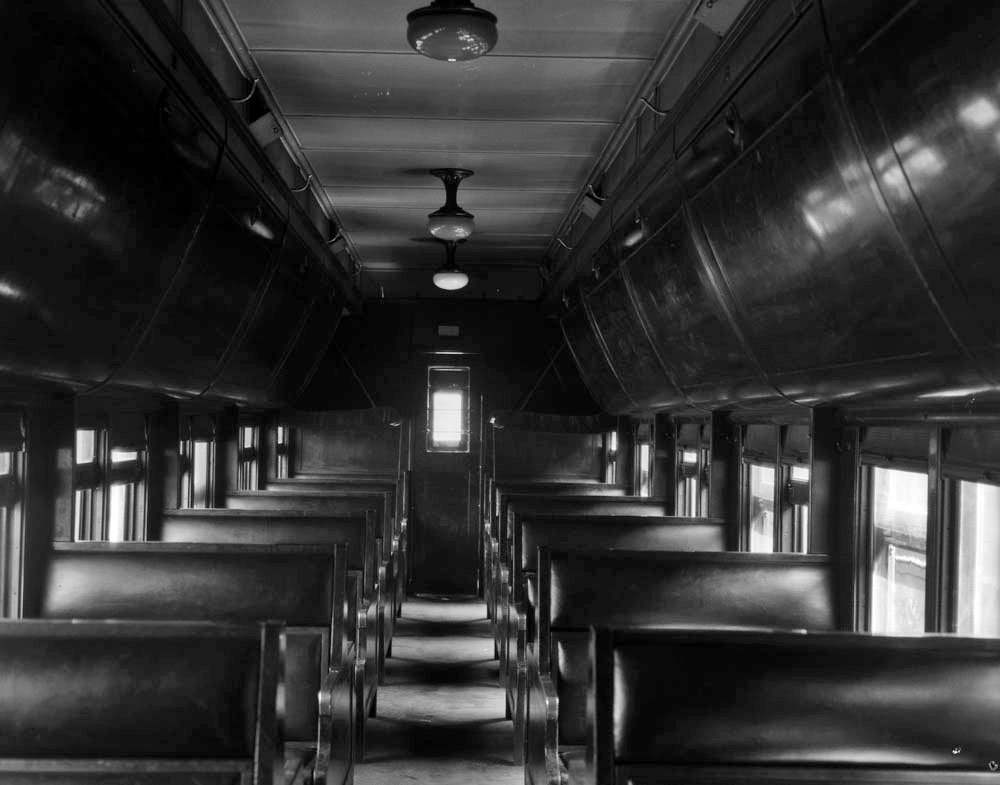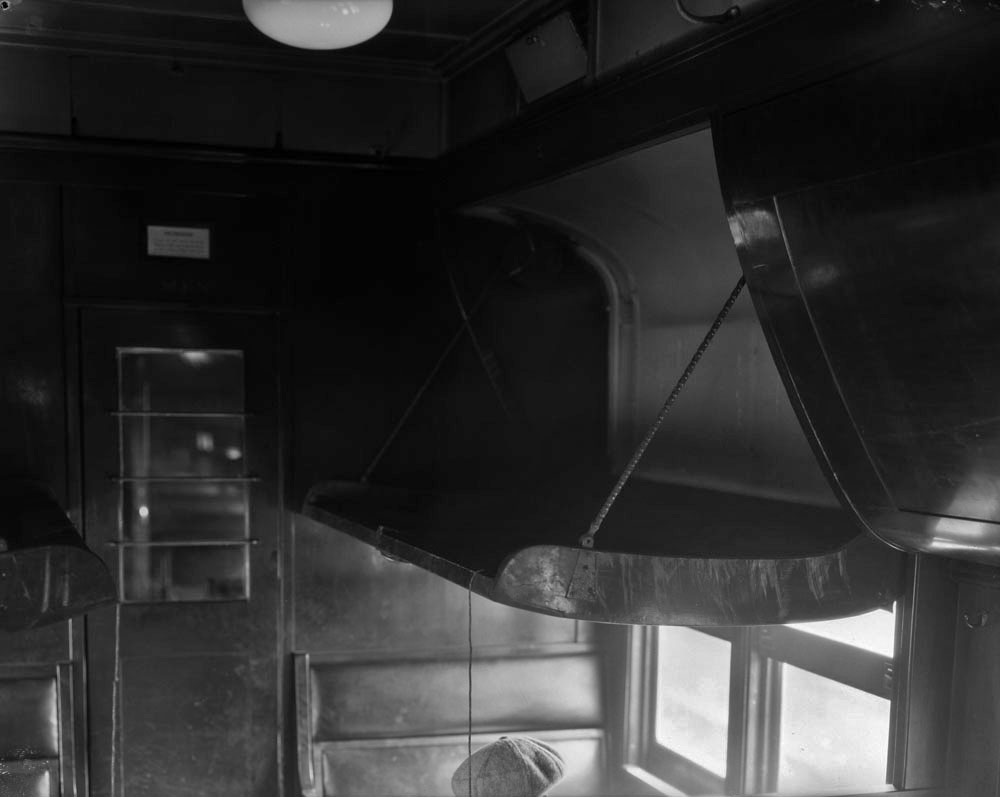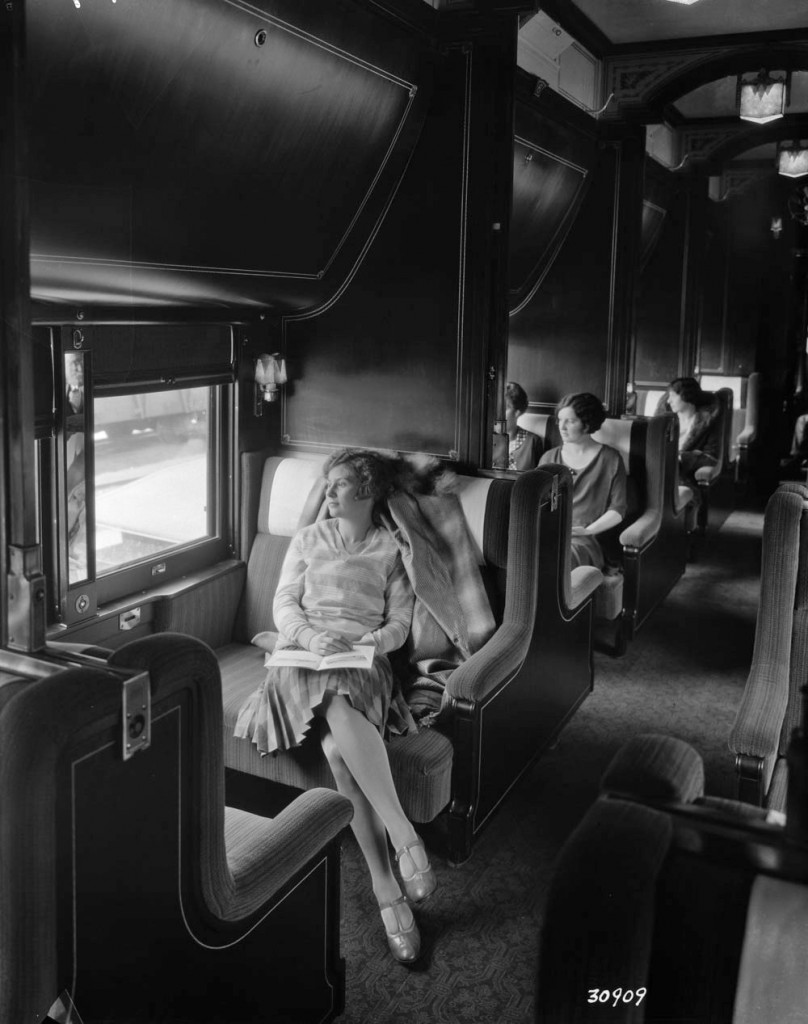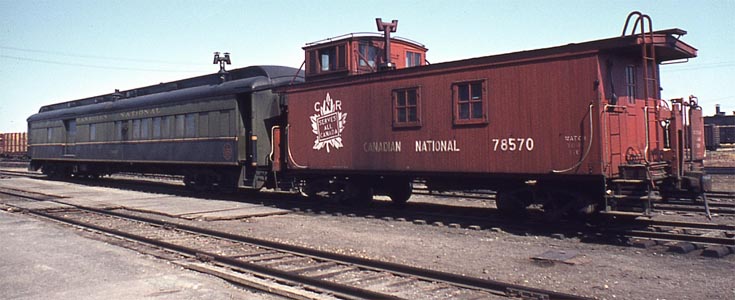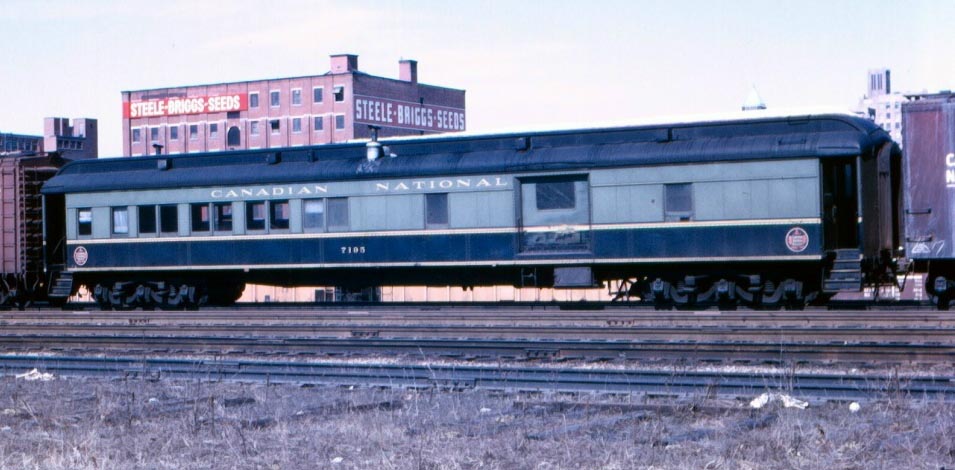This section provides the history of CN 7195 form its beginnings until its move to Smiths Falls and RMEO.
Summary
- 05/1919 – 03/1920; CNoR 7212 – Colonist Sleeper
- 03/1920 – 02/1956; CN2762 – Colonist Sleeper
- 02/1956 – 10/1973; CN 7195 Combine
- 10/1973 – 1990; Toronto and York Division of CHRA
- 1990 – Present; Railway Museum of Eastern Ontario
Colonist Sleeper
Canada’s huge land mass and sparse population presented our railways with tremendous challenges. An early response was a major campaign to bring settlers, or “colonists”, from Britain and various European countries. They would be given low-cost fares, a land grant, and the bare essentials to start a new life farming in the Canadian West. The number was so great that a new type of rolling stock was developed to carry them.
The “Colonist Sleeper” was a solidly-built, thoroughly modern car of robust steel construction. It was similar to sleeping cars on other trains, but without the frills of first-class sleepers. The accommodation consisted solely of upper and lower berths. The upper berths folded up against the ceiling, while the lower berths folded up into seats. Passengers provided their own bedding on these cars, and cooked their own meals on the coal stoves provided.
The interior was of attractive stained mahogany, but without the elaborate inlay work common on first class sleepers. As built, the colonist cars could accommodate 72 passengers in 18 open sections. The floors were grey battleship linoleum, which was easily cleaned and would last for decades.
The picture below provides you an overview of a CNR Colonist Sleeper car. The upper berths folded down as beds while the seats were also able to fold down making the lower berths. Blankets and sheets were used to separate the “compartments” -1926. Picture is from the Library and Archives of Canada, Link to LAC Picture
In this picture you can see one of the upper berths folded down -1926. Picture is from the Library and Archives of Canada, Link to LAC Picture
In comparison, below is a first class sleeping car from 1929. Picture is from the Library and Archives of Canada, Link to LAC Picture.
The Pullman Car Company and Canadian Car & Foundry Ltd. together delivered a total of 130 nearly-identical colonist sleepers to Canadian National Railways in 1919. These two orders were the earliest group of new passenger cars received by the CNR. It was also was the largest number in one group until CNR’s massive order of streamlined coaches and other passenger cars in 1954. Note that the car was ordered by CNoR, but before it could be delivered, the company became part of the government-owned Canadian National Railways. Our car was delivered as Canadian National #7212. It was delivered wearing Canadian National lettering, but with its assigned Canadian Northern number.
Canadian National soon rationalized its fleet of cars from its many railways. This car was renumbered in March 1920 to CN #2762, a CN class PE-73-B Colonist sleeper. As a colonist sleeper, this car spent 37 years providing basic, economical transportation across the country. Thousands of new Canadians arrived at their new homes aboard the car.
Its most active service would have been during the Second World War when colonist sleepers were pressed into troop service. After the war, a flood of European immigrants escaping their war-ravaged homelands would keep the colonist sleepers busy for several years, but by the 1950’s the cars were seeing little use. Many colonist sleepers were converted to other uses over the years as CN sought to find more productive uses for them.
Our car, Colonist sleeper #2762, was part of a second group converted to combines. It was released as Combine #7195 in February 1956, class CA-73-C2. Seating capacity was listed as 34, but the existence of a coal stove indicates 29 is the correct figure. The “modern” baggage doors with sealed windows presently on the car are original to the 1950’s conversion.
Combine
As the nation’s transportation lifeline, the railways were required to serve tiny communities scattered along thousands of miles of lightly traveled rail. The railways coped with this difficult financial situation by making do with less. If traffic on a line couldn’t support a full passenger train, a mixed train would be operated – a short freight train with passenger cars tacked on the rear. Often there was so little traffic that the passengers, baggage, and mail were consolidated into a single car. These cars were known as combination coach-baggage cars, or “combine” for short.
Combines were usually converted from older coaches or sleepers to reduce costs. There were very few factory built combines in Canada.
As modern roads and automobiles reached into more remote locations, the railways had lost traffic on their lightly travelled branch lines. With passengers, baggage, mail, and freight migrating to the highways, the need for mixed trains and indeed the rails they traveled on came to an end. With very few exceptions, the era of mixed trains ended four decades ago.
CN #7195 was later modified in January 1959, although details are unavailable. This modification was probably done in the field and involved the installation of an oil stove in the baggage compartment and installation of a water cooler through the washroom wall.
Museum
#7195 was retired January 1973, repainted by CN in Toronto, and donated to the Toronto & York Division of the Canadian Railroad Historical Association for display at their museum in “Harbourfront” in October 1973. During the 1980’s urban development squeezed the museum out of Harbourfront. The displaced collection was stored in a decaying industrial area where T&Y volunteers struggled to protect them. After years of vandalism and neglect, the volunteers gave up and attempted to find new owners for the collection.
At this time, the Railway Museum of Eastern Ontario acquired #7195 along with other equipment. In October 1990 they were moved to the museum site. Upon arrival, volunteers rebuilt the roof and stabilized the car to protect it from the elements until a proper restoration could take place.
Select another section to read more.
